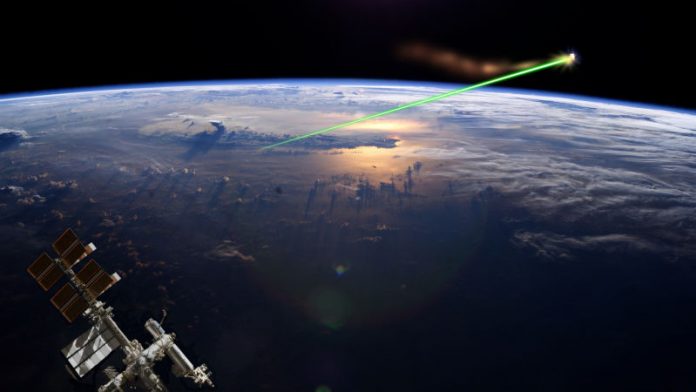Space junk is a real problem that could trap humans forever on Earth — so now Australian researchers are working on powerful ground-based lasers to shoot it all away.
EOS Space Systems has been building and developing tracking systems for satellites and space debris at Mount Stromlo in Canberra.
And the company’s CEO, Professor Craig Smith, says researchers have developed a photon pressure laser that “is able to nudge space debris objects around, change their orbits.”
The first step for scientists would be to use low-powered lasers to detect and follow identified objects in space.
“With the laser tracking systems we track objects and predict collisions to high accuracy,” Professor Smith said.
If a piece of space debris then looked like it could have a collision with another piece, then a laser would be used to change its orbit.
The next step would be to keep “ramping up the power to bigger and bigger lasers.”
“Then we can start moving it enough to what we call ‘de-orbit’ the satellite by reducing its velocity enough that it starts to change orbit height.
“It eventually hits the atmosphere and the atmosphere takes over and drags it and burns it up.”
However, Professor Smith said scientists would have to ensure they did not break debris into two, which would then only add to the amount of pieces in orbit.
“The real trouble is you make it harder. If they get smaller they get harder and harder to track, and so they start to become invisible — but also still lethal to satellites.”
Australia ‘is best place for laser technology’
Space junk might sound innocuous enough, but as the Hollywood film Gravity reminded cinema-goers it can be a killer — especially if you are an astronaut hanging about in space and getting in its way.
Equally it can also destroy satellites, of which there are many circling the Earth.
Dr Ben Greene, the chairman of the Space Environment Research Centre, said there were “hundreds and thousands of space debris that are a size where they would threaten satellites.”
“We’re losing multiple satellites a year now to space debris,” he said.
Under the worst-case scenario for space debris, a cascading series of collisions could render the near-Earth orbit a no-go zone for satellites and space craft.
Hence the urgency in finding ways to get rid of space junk.
Efforts are underway to make space flight less messy, such as eliminating spent rocket boosters which are currently dumped in space.
In Europe, space harpoons and space nets are being developed for catching larger pieces of debris.
But right here in Australia the focus has been on using concentrated light to nudge the space junk out of harm’s way.
And Dr Greene said Australia was the obvious place to station the laser technology.
“It’s most likely going to be from Australia, because you need a decent-seized platform to work from and you need good weather. And Australia has both,” he said.















